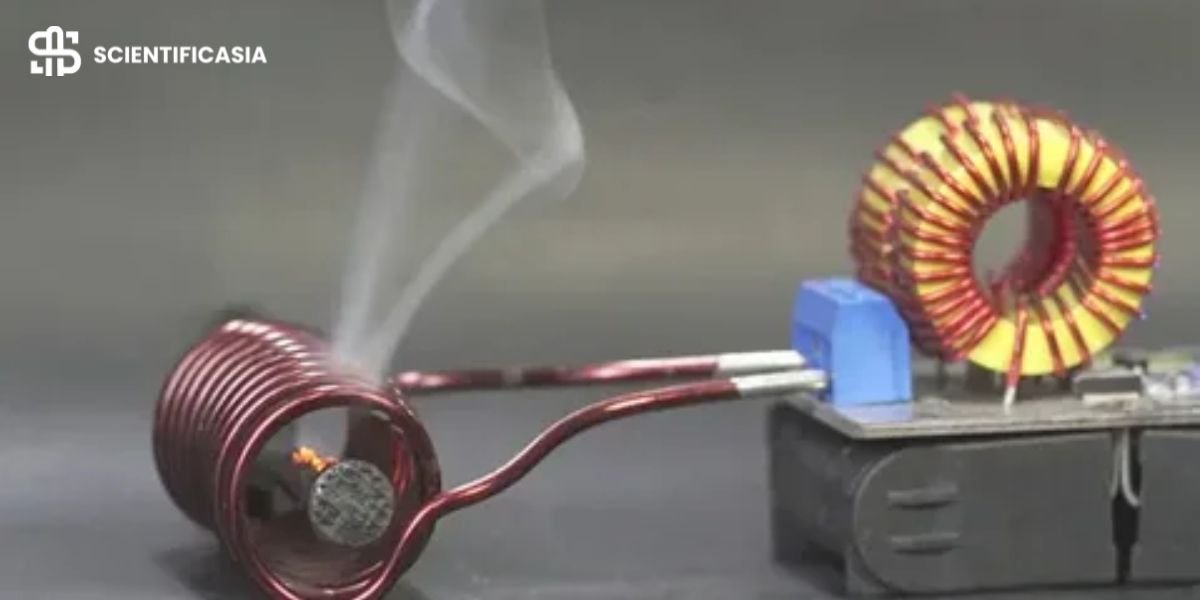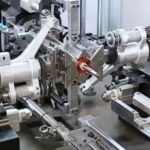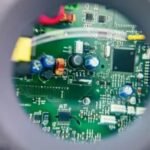Induction heating is emerging as a transformative solution for modern manufacturers challenged by high energy costs and stringent environmental standards. Traditional methods, such as gas or resistance furnaces, frequently lead to inconsistent product quality, excessive energy waste, and significant carbon emissions.
In contrast, induction heating uses electromagnetic fields to generate heat directly within the workpiece. This fundamental principle enables exceptional precision, superior energy efficiency, and a cleaner operational footprint.
As a result, this technology is becoming a cornerstone for sustainable manufacturing, fundamentally changing industrial thermal processing for a smarter, greener future.
This article will explore how induction heating is revolutionizing modern manufacturing by delivering unmatched precision control and advancing sustainability, ultimately driving the industry’s transformation toward a smarter, greener future.
Induction Heating for Precision Manufacturing
Induction heating is fundamentally reshaping modern manufacturing by delivering unparalleled control over thermal processes.
Unlike traditional methods, it provides manufacturers with the ability to apply heat with surgical precision, leading to significant gains in product quality, process innovation, and overall efficiency.
This section explores the inherent advantages of induction technology and the tangible benefits it brings to precision-focused production environments.
Inherent Advantages from Induction Heating’s Principles
At its core, induction heating is a non-contact process. It uses a high-frequency alternating current through a copper coil to create a rapidly alternating magnetic field. When a conductive material, like steel, is placed within this field, the energy induces electrical currents—known as eddy currents—within the part itself.
This action generates heat directly and instantaneously inside the workpiece. The key distinction from conventional furnace heating is that heat is not applied externally and conducted in; instead, the workpiece essentially heats itself from the inside out.
This fundamental principle unlocks two critical advantages for precision manufacturing:
Localized Heating:
Perhaps the most significant benefit is the ability to target heat with extreme accuracy. Manufacturers can focus energy on a specific area, such as hardening just the teeth of a gear or annealing the weld seam of a tube, without affecting the surrounding material. This eliminates the distortion and energy waste associated with heating an entire component.
Instantaneous Control:
The response time of induction heating is nearly immediate. Power output and, consequently, temperature can be adjusted and controlled within milliseconds.
Modern systems integrate sophisticated closed-loop temperature monitoring, ensuring that every single part follows an identical, repeatable heating profile. This eliminates the guesswork and variability common in batch-type furnace processes, guaranteeing consistent results part after part.
Practical Benefits of Precision Control
The combination of localized heating and instantaneous control translates directly into powerful, real-world manufacturing outcomes.
First and foremost, product quality is dramatically enhanced. In applications like surface hardening, induction heating produces a more uniform and finer-grained martensitic layer on components like gears and shafts. This results in superior wear resistance, increased fatigue strength, and a longer service life for critical machinery parts.
Furthermore, this precision enables groundbreaking manufacturing innovations. Processes that were once impractical become straightforward.
For instance, selective hardening allows for the creation of parts with varying material properties—a tough, wear-resistant surface coupled with a tough, shock-absorbing core—enabling lighter, stronger, and more optimized designs.
This is crucial for advancements in industries like aerospace and automotive, where lightweighting is a primary goal.
Finally, induction heating significantly reduces downstream processing. Because heat is applied so precisely and locally, thermal distortion is minimized. This means parts often require little to no subsequent straightening or extensive grinding after heat treatment.
The direct result is a shorter production cycle, lower labor costs, and a reduction in consumables, driving down the total cost of manufacturing.
In summary, the precision offered by induction heating is a game-changer for quality and efficiency. However, its impact extends beyond the production line. The same characteristics that make it so precise also make it remarkably efficient and clean, paving the way for more sustainable manufacturing operations, which we will explore next.
Induction Heating for Sustainable Manufacturing
While the precision of induction heating delivers immediate gains in product quality and efficiency, its advantages extend powerfully into the realm of sustainability.
This technology is not just a tool for better manufacturing; it is a strategic asset for companies committed to reducing their environmental footprint and operating greener, more efficient facilities.
By fundamentally changing how heat is applied, induction heating directly addresses critical issues of energy consumption, emissions, and waste, making sustainable manufacturing an achievable goal.
Superior Energy Efficiency of Induction Heating
The energy efficiency of induction heating presents a compelling case for its adoption. Traditional gas-fired furnaces are notoriously inefficient, with a significant portion of the energy lost to heating the surrounding atmosphere, lining, and fixtures. Their thermal efficiency is typically low, often below 40%.
In stark contrast, induction heating systems excel by directing energy precisely where it is needed. Because heat is generated directly within the workpiece, losses are minimized. Consequently, modern induction systems routinely achieve thermal efficiencies exceeding 70%, meaning a far greater percentage of the electrical energy input is converted into useful heat within the part.
This dramatic leap in efficiency has a direct and positive impact on a manufacturer’s bottom line. It translates into lower energy consumption per unit produced, significantly reducing operational costs.
Furthermore, this high efficiency is a powerful tool for achieving corporate sustainability targets and complying with increasingly strict carbon reduction regulations, supporting global initiatives like the “Dual Carbon” goals.
A Clean, Pollution-Free Production Environment
Induction heating also creates a vastly cleaner and safer workshop. As a purely electric process, it generates zero direct emissions at the point of use.
Unlike combustion-based systems, there are no greenhouse gases like CO₂ or harmful pollutants such as nitrogen oxides (NOx) and sulfur oxides (SOx) released into the factory air.
This not only helps companies meet environmental standards but also significantly improves workplace conditions for employees by eliminating fumes and reducing ambient heat.
Moreover, the all-electric nature of induction heating makes it perfectly suited for the future of energy. It seamlessly integrates with renewable energy sources like solar and wind power.
As the electrical grid becomes greener, the carbon footprint of induction heating shrinks accordingly. This synergy positions it as the ideal thermal technology for building fully electrified, net-zero carbon factories of the future.
Reducing Waste at the Source
Sustainability is also about resource conservation, and induction heating excels here too. The precision control that boosts quality also minimizes waste by drastically reducing the scrap rate. Parts are heated correctly the first time, every time.
Additionally, since the heating process is so fast and localized, workpiece oxidation and scale formation are significantly reduced compared to prolonged furnace exposure. This leads to less material loss, longer tool life, and a reduction in the resources needed for cleaning and finishing.
This approach aligns perfectly with the principles of a circular economy, promoting resource efficiency from the very beginning of the production process.
In conclusion, the synergy between precision control and sustainable benefits makes induction heating a cornerstone of modern responsible manufacturing. Yet, its potential is further amplified when integrated with digital technologies.
The next step in its evolution lies in connectivity and data, which we will explore in how induction heating synergizes with smart manufacturing initiatives.
Integration of Induction Heating with Smart Manufacturing
The true potential of induction heating is fully realized when it connects with the principles of Industry 4.0. Beyond its standalone benefits in precision and sustainability, this technology serves as a vital data-generating node within the smart factory ecosystem.
By seamlessly integrating into automated lines and providing rich, real-time process data, induction heating transforms from a powerful tool into an intelligent partner, driving manufacturing towards unprecedented levels of efficiency and autonomy.
Data-Driven Process Optimization
Modern induction heating systems are equipped with sophisticated sensors and controls, making them excellent sources of valuable production data.
They continuously monitor and record critical parameters such as power output, temperature (often via pyrometers), and cycle time for every single part processed. This real-time data capture is a game-changer for quality management.
Instead of relying on periodic manual checks, manufacturers can now integrate this data stream directly into their Manufacturing Execution System (MES). This enables full traceability, where the exact heating profile of any component can be recalled for analysis.
Furthermore, by analyzing this data, companies can move from reactive quality control to predictive quality assurance. Patterns in the heating data can predict final product properties and even signal the need for preventive maintenance on the induction system itself.
This creates a digital thread, forming the foundation for a “digital twin” of the heat treatment process, which allows for virtual testing and continuous refinement of recipes without disrupting production.
Seamless Integration into Automated Production Lines
The physical design of induction heating equipment complements its digital capabilities. Its compact, modular nature makes it inherently easy to integrate into automated production cells.
Robots can effortlessly load and unload parts from the induction coil, enabling true 7×24-hour uninterrupted operation. This reliability is a cornerstone for building flexible manufacturing units and lights-out “dark factories” where human intervention is minimal.
Because induction heating is so fast and consistent, it becomes a predictable and reliable node within a larger automated process.
It does not create bottlenecks; instead, it synchronizes perfectly with the high-speed rhythm of automated assembly, machining, and inspection stations. This seamless integration is crucial for manufacturers seeking to enhance production flexibility, respond quickly to market changes, and maximize overall equipment effectiveness (OEE).
In summary, the synergy between induction heating and smart manufacturing creates a powerful feedback loop of data and automation. This elevates the technology from a simple heating application to a core component of an intelligent, self-optimizing production system.
As we have seen, the journey of induction heating encompasses precision, sustainability, and digitalization, fundamentally reshaping modern industrial production for a smarter, greener future.
Conclusion
In summary, induction heating successfully merges precision manufacturing with sustainable practices, fundamentally reshaping industrial production. It has evolved from a tool for improving single processes to a strategic technology that drives the entire sector toward higher quality, lower costs, and greener operations
Looking ahead, the integration of AI and the Industrial Internet of Things (IIoT) will make induction heating systems even more intelligent, enabling adaptive control and predictive capabilities.
For forward-thinking manufacturers committed to competitiveness and social responsibility, embracing and integrating this technology is no longer optional but essential for future success.














